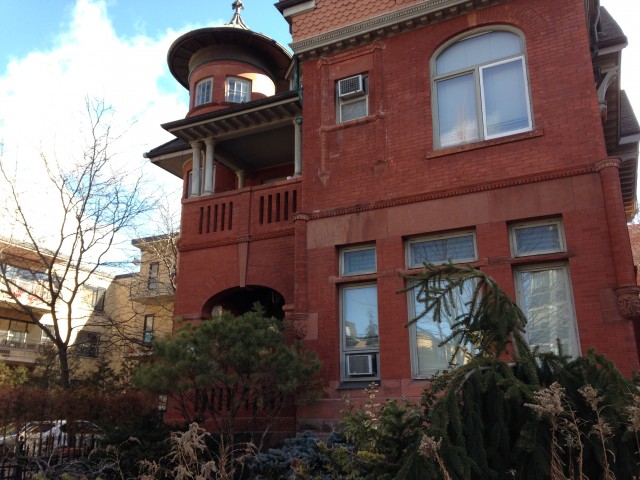This question came from Matias C.L. via our latest website survey.
Queer and trans youth – who I will refer to as LGBTQ2 youth – are overrepresented among people experiencing homelessness.
Research from Ottawa, Ontario in 2000 found that anywhere between 25 and 40% of all youth experiencing homelessness identify as LGBTQ2. More recently, the 2012 Toronto Street Needs assessment asked participants staying in youth shelters about their LGBTQ2 identity for the first time and found that 1 in 5 youth experiencing homelessness identify as LGBTGQ2. Given these numbers, it’s crucial that we make shelters and transitional, supportive and affordable housing accessible for this population.
While youth in general have a variety of needs when it comes to housing, there must be extra considerations for those who identify as LGBTQ2. Many leave home due to lack of family/guardian acceptance, and find the same lack of support elsewhere. As Dr. I. Alex Ambramovich wrote in No Safe Place to Go:
“The threat of violence and harassment on the streets is exacerbated for LGBTQ youth due to frequent encounters with homophobia and transphobia. These threats make it especially hard for youth who were forced to leave home due to homophobia or transphobia because it makes coming out and trusting people more challenging. There are also countless situations where youth are victimized, ridiculed, and beaten up on the streets and in the shelter system simply for their gender and/or sexual identity. Regardless of their gender or sexual identity, homeless youth most often come from family situations of conflict, abuse, and neglect.”
While overt discrimination due to trans- and homophobia is a large issue for many LGBTS2 youth, there are also situations in which it is subtlety present or systemic, as in shelter systems. In the same report, Abramavich highlighted this as well: “Most shelters are segregated by birth sex, which increases the risk for gender discrimination and gender violence to occur within shelters. Shelter staff members tend to have minimal training around transgender-related issues, needs, and terminology.” It is estimated that 1 in 3 transgender youth, who experience more violence than any other group, are turned away from shelters based on their gender expression/identity.
Recommendations
Abramavich recommended
None of this, however, directly addresses how to make low-income or social housing more accessible. Unfortunately, as I wrote a few weeks ago, there has been little research on LGBTQ2 youth outside of their experiences within urban shelter systems. That said, I think many of the recommendations made by Abramavich and other researchers/advocates/community members can be applied to low income and social housing.
- Training: Ensure that everyone involved (caseworkers, property managers, superintendents, etc.) receive explicitly anti homophobia and anti transphobia training; and learn about LGBTQ2 issues, experiences and terminology.
- Community involvement: Give LGBTQ2 youth experiencing homelessness opportunities to share what would make housing more accessible and safer for them in your specific building, complex, or community. Encouraging involvement and meaningful participation (not just tokenism) can make services more effectively inclusive.
- Reformed processes: Trans youth may have identification, documentation, and/or references that correspond with a different name, sex, and/or gender than what they currently identify as. Creating processes that are flexible and understanding of these changes is key to making any kind of housing more accessible.
- Integrated supports: Depending on age, circumstances and experience, LGBTQ2 youth will need a variety of supports (casework, financial assistance, education, life skills, counselling, family reunification, etc.) to help them secure and stay within housing. What is important here, as pointed out by Gaetz and others, is availability and choice - some LGBTQ2 youth will want completely independent living while others will want housing that is more deeply supportive.
Ultimately, as Gaetz et al. wrote in Youth Homelessness in Canada, moving to a homelessness prevention model is key to ending youth homelessness. In the meantime, however, we must make existing services more safe and accessible – especially for vulnerable groups like LGBTQ2 youth.
This post is part of our Friday "Ask the Hub" blog series. Have a homeless-related question you want answered? E-mail us at thehub@edu.yorku.ca and we will provide a research-based answer.
Photo credit: Erica Lenti on Torontoist


